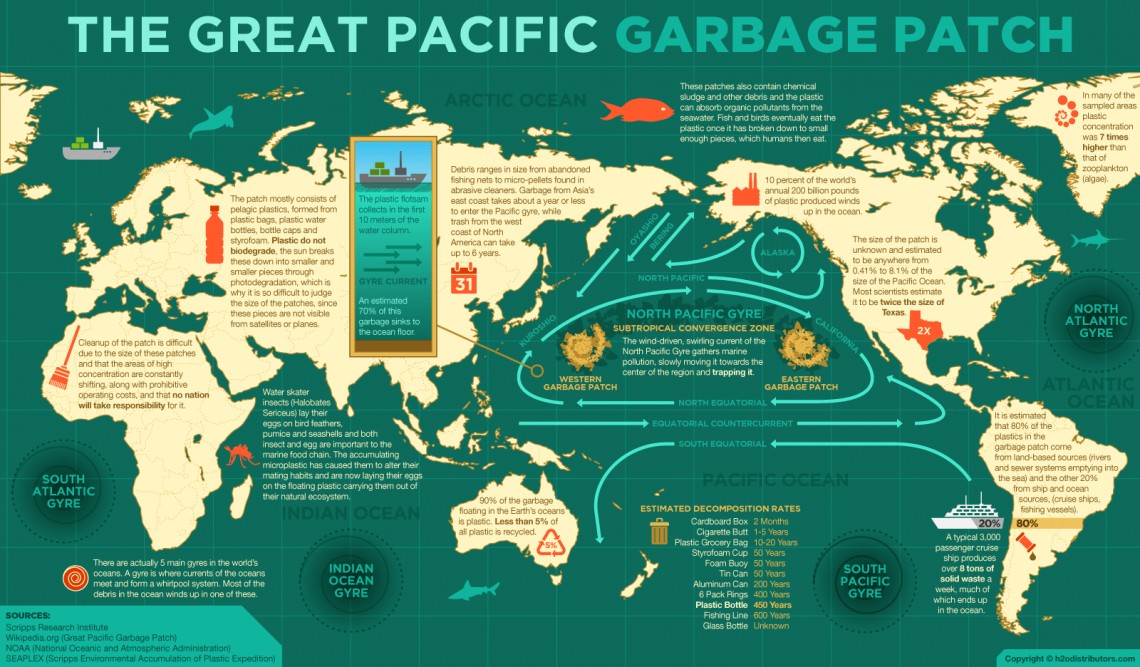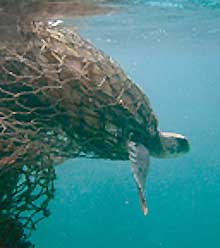Garbage
Patches
The ocean gyres concentrate floating debris in the
center, like a whirlpool. The direction of angular
acceleration is toward the center.
Plastics were introduced within the last century. In
the last few decades, an increasing and alarming
portion of that debris consists of human-derived
plastics, that is, garbage. Plastic is a durable
material, taking hundreds to thousands of years to
degrade. In the degrading process, plastics breaks
into smaller and smaller pieces, to the point where
they may not be visible to the human eye.
Nevertheless, these fragments are intermixed with
plankton and are consumed by marine animals, from
salmon, to whales, to birds. Plastic bits are now
six times as prevalent as plankton in the gyre. 
source:
https://www.bookyourdive.com/blog/2014/3/23/great-pacific-garbage-patch
The amount of garbage in the oceans is
difficult to estimate, but the Great Pacific
Garbage Patch contains about 100 million tons of
plastic debris, at a density of approximately
970,000 plastic fragments per square
kilometer. The total area is around 4.5
million square kilometers, or about the size
of Turkey or double the state of Texas.
The garbage patch is concentrated 2000
kilometers west of Los Angeles.

source:
http://nature.ca/explore/di-ef/wdgc_pp_e.cfm
Most of the trash floats in the top
thirty meters of water,
but storms disperse the flotsam, and storm and
solar degraded
plastic sinks deeper in the water column.

source:
http://www.norcalblogs.com/birds/2013/03/25/plastic-bags-birds/
The stomach contents of this albatross
indicate
the consequences of plastic litter in the
environment.


Fishing gear is a major component of marine
debris. The nets continue to capture fish
and other unsuspecting animals long after being
discarded.
source: (right)
http://www.vestaldesign.com/blog/2006/08/oceans-of-garbage/
and (left)
http://www.worldcrunch.com/tech-science/trying-to-spot-the-ocean-s-plastic-soup-from-up-high/c4s5496/#.VHUH6FbpTwI